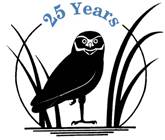Using maxent output in Arcmap tabulate area tool
22 views
Skip to first unread message
Neil Daniels
May 16, 2018, 9:39:05 AM5/16/18
to max...@googlegroups.com
Hi all
I have the ASCII output (logistic) from Maxent which obviously contain probability cells all below 1
My study areas are 17000 square polygons at 5minute resolution( each cells approx. 86km2)
I plan to use the tabulate areas in order to calculate the amount of Maxent probability grid cells that fall within each of my study areas. These are two approaches below I have used but both are not working:
1. After converting the maxent ASCII file to ESRI GRID float, I projected it into a projected co ordinate system. I then used the build raster attribute table tool since it did not have an attribute table, and I would assume you need one in order to perform the tabulate areas successfully. I was unable to build a raster table because arcmap said that only single band integer raster datasets can be used
2. So, I then converted the ASCII file into a ESRI GRID interger instead. Projected it into a projected co ordinate system, then used the build raster attribute table tool. The problem is the entire map consists of values of 0 and the attribute table consists of 1 row with all the counts summed into the single row
I'm not sure what else to try
If anyone could suggest anything, it would be highly appreciated
Kind regards
Neil Daniels

Disclaimer - This e-mail is subject to UWC policies and e-mail disclaimer published on our website at: https://www.uwc.ac.za/Pages/emaildisclaimer.aspx
Jamie M. Kass
May 17, 2018, 12:10:46 AM5/17/18
to Maxent
You could make a binary raster with the Con tool, then convert it to polygon and run Intersect. Create a new field in the intersected polygon and Calculate Geometry to get the area of each shape. This will only work if it’s projected in meters correctly.
Jamie
Jamie
Neil Daniels
May 17, 2018, 7:42:14 AM5/17/18
to max...@googlegroups.com
Hey Jamie
Thanks for the suggestion. Will make a note of it
I actually managed to use the raster calculator and convert to integer with values between 0-100
Kind regards
Neil Daniels
On Thu, May 17, 2018 at 6:10 AM, Jamie M. Kass <ndimhy...@gmail.com> wrote:
You could make a binary raster with the Con tool, then convert it to polygon and run Intersect. Create a new field in the intersected polygon and Calculate Geometry to get the area of each shape. This will only work if it’s projected in meters correctly.
Jamie
--
You received this message because you are subscribed to the Google Groups "Maxent" group.
To unsubscribe from this group and stop receiving emails from it, send an email to maxent+unsubscribe@googlegroups.com.
To post to this group, send email to max...@googlegroups.com.
Visit this group at https://groups.google.com/group/maxent.
For more options, visit https://groups.google.com/d/optout.
Husam El Alqamy
May 17, 2018, 1:37:39 PM5/17/18
to max...@googlegroups.com
Hi Neil
I would suggest a different approach. From the beginning vectorize your ESRI GRID raster into polygons. then you will have your attributes table and the polygon shape where you can do all the required calculations in a vector domain. Another approach is to use the raster calculator and multiply your raster by 10000 for example then it can be converted to an integer with the values being carried over nicely without being rounded to 0 for all values.
Regards
| Hossameldin ELALKAMY, MPhill., PhD. GIS Analyst Conservation Data Center| Victoria Ministry of Environment & Climate Change P. 250.614.7521 C. 778.896.3229|395 Waterfront Cres. Victoria, BC., V8W 9M1 |
| Profile |
Neil Daniels
May 21, 2018, 3:47:43 AM5/21/18
to max...@googlegroups.com
Hi Husam
I actually managed to go the polygon route and so far its looking and working out nicely
Thanks for the suggestion
Kind regards
Neil Daniels
Reply all
Reply to author
Forward
0 new messages

